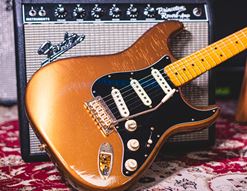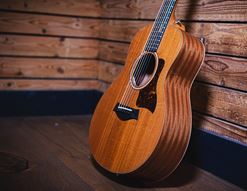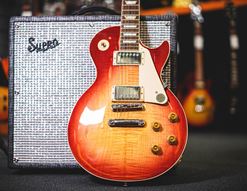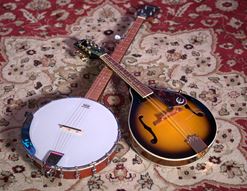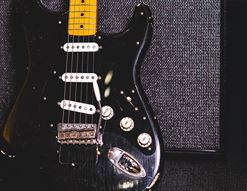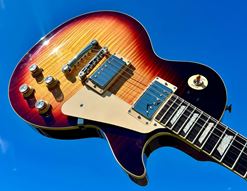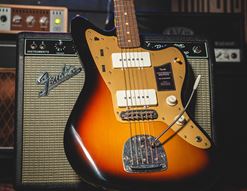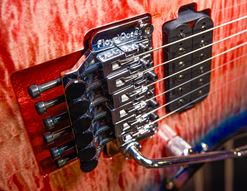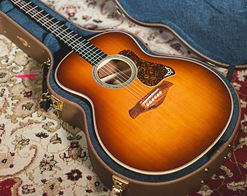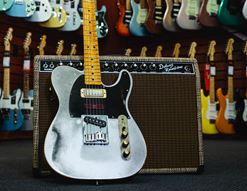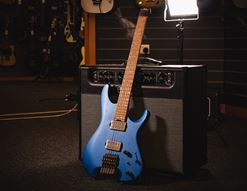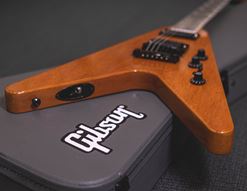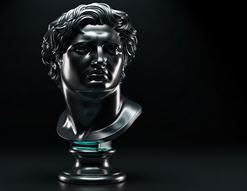Fuzz. The world’s greatest guitar effect. At its best, it can allow us levels of expression on the guitar that are unattainable otherwise. At its worst…well, at its worst, fuzz is still totally good fun. You can’t lose with fuzz, that’s the key! The more glitchy, wheezy and horrendous it gets, the more fuzz fans are happy. It’s a delight to mangle our otherwise pristine guitar tones with a barrage of skronky, square-waved fuzz, particularly when we get unpredictable sonic side effects!
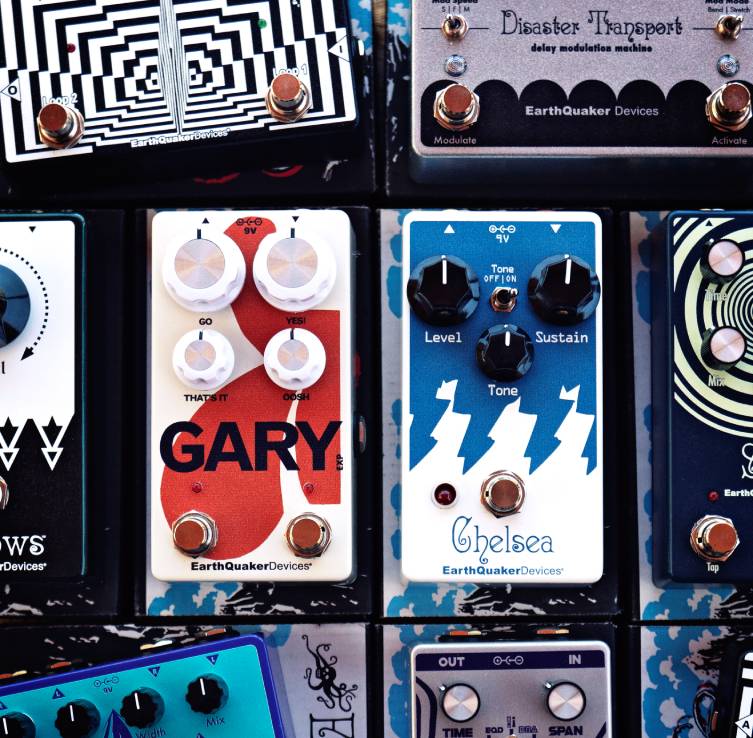
Today, I want to look at fuzz: how it came about, how to use it and which types exist. I’ll explain the difference between fuzz and other distortion styles, and maybe share some great famous examples of fuzz abuse.
Contents
What is Fuzz?
So what is fuzz? In simple terms, fuzz is a type of distortion. It’s the most intense and transformative type too, as the intention is to deliberately alter the sound.
The three main types of distortion are overdrive (OD), distortion and fuzz. The first two are - more or less - designed to mimic the sound and behaviour of an amplifier that is naturally ‘breaking up’ sound-wise, due to there being too much volume going into it and overloading the input signal. That’s why we talk about ‘overdrive’. Distortion is when that situation is taken to a greater extreme, causing a thick, heavy rock sound.
Fuzz, then, is when a device drastically overloads the input but has no intention of preserving anything of the natural signal. It compresses and distorts the sound to such a degree that a guitar note’s natural sine wave character (if observed on an oscilloscope) transfers into a square wave. Fuzz pedals create all manner of extra sounds and frequencies due to the chips used inside their circuits, and tech like a frequency multiplier, which adds harmonic information and overtones to your sound.
Who Invented Fuzz Pedals?
The first ever fuzz pedal was the Maestro FZ-1. You’ve definitely heard it: it’s the sound Keith Richards had for the intro of (I Can’t Get No) Satisfaction. The Maestro line was owned by Gibson, who recently revived the brand for a new collection of pedals.
How Do I Use a Fuzz Pedal?
Fuzz pedals are used and operated in the same way as all other guitar pedals. You connect them in-line, from your guitar to your amplifier, using ¼ inch jack cables. The guitar goes to the pedal input, and the pedal’s output goes to the amp input.
If you want to use a number of different pedals (as most of us do), I recommend having the fuzz pedal near the beginning of your effects chain. Tuner first of course! Overdrives (including fuzzes) should go before modulation and ambient effects.
Classic Fuzz Pedals
There are absolutely hundreds of fuzz pedals in existence. Some of them are truly unique, but the vast majority of them are based on these influential classics:
- Vox Tone Bender: there are several iterations of this, and pedal-geeks definitely have their preferences! The MkII Tone Bender is a classic, and in fact somewhat morphed into the Fuzz Face (see below)
- Dallas-Arbiter Fuzz Face: so-called due to a chassis that resembled a smiling cartoon face, this pedal was made famous firstly by Hendrix and then by a long line of fuzz-maniacs.
- Electro-Harmonix Big Muff: full-on fuzz sound beloved of grunge players and mainstream guitar heroes alike. Many, many versions exist, from both Electro-Harmonix themselves and most boutique builders.
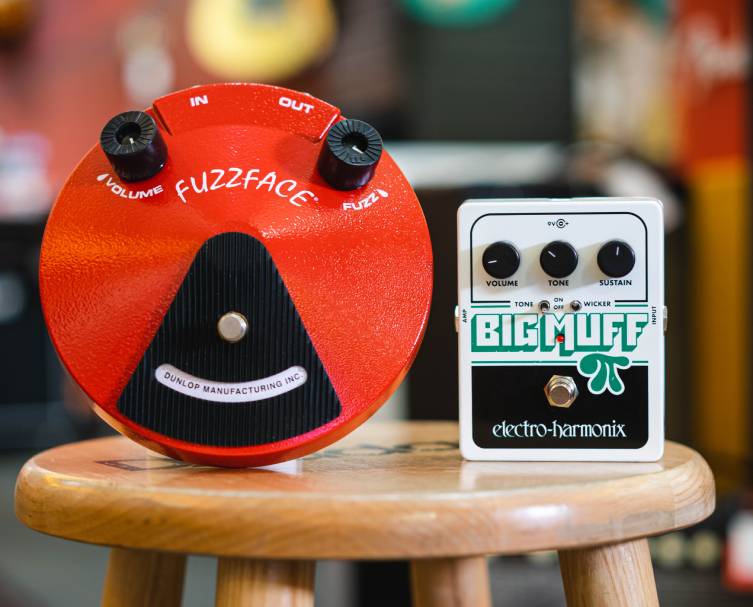
Why these three? I’m not sure, except that they all sound excellent, people always want them, and they are reasonably simple circuits, at least in theory.
I say that, because the difference between a good fuzz pedal and a bad one is very subjective. Given the nature of the components available - back then and now - there have been boxes of identical fuzz pedals made that all sound objectively different. Loving one vintage Fuzz Face, for example, is no indication that you’ll find other ones as enjoyable. Indeed, you may find other ones to be even better!
Classic fuzz pedals have come in many varieties. We’ve already mentioned the Maestro Fuzz. Other classic fuzzes include these:
Octavia: designed by Roger Mayer for Jimi Hendrix This brought the world the notion of the ‘octave fuzz’, which worked with pronounced natural overtones.
Acetone Fuzz, and then the Foxx Tone Machine, which took the octave fuzz sound to a wild extreme and then a wilder extreme! The pedal itself was covered in brightly-coloured felt flocking: literally a fuzzy pedal!
Fuzz Lore
People do get very romantic about vintage fuzz circuits. Particularly with Tone Bender circuits, fans can get very descriptive about the EQ benefits and different ways their pedal clips compared to others.
I’m not being critical here. In fact, I sympathise, and believe them all to be mostly correct! Vintage pedals were built in a very straightforward, matter-of-fact manner, before people started getting fussy about capacitors, and whether their NKT275 germanium transistor had a red dot on it or not. Nowadays, we expect to be able to buy any given pedal and have it be the same across the market, but that simply wasn’t the case back then. Builders built, and some components naturally had widely differing tolerances and outputs. It all added up in small ways to mean that yes, some Mk1 Tone Bender circuits did have more of a midrange hump than others.
The question really comes down to this: are you getting the sound you want? If so, brilliant! If not, why not? Sometimes simply changing a setting on a fuzz pedal can bring a mixture of differences to your sound. The good ones are highly interactive!
Cool Features of Fuzzes
Fuzz pedals are not just gnarly distortions. Here are some features that different fuzzes have that can help transform your playing:
- ‘Dying Battery’ - in old pedals, when the battery was almost juiced-out, the sounds from the fuzz circuit were very cool and expressive. Nowadays, some pedals have ‘bias’ controls to affect that scratchy dead-battery sound
- Gate: many fuzz circuits heavily ‘gate’ the sound (they cut off low output signals like handling noise or accidental taps), which can lead to some quite synthy sounds! It’s also great for loud bands, as the background hiss really diminishes.
- Harmonics: fuzzes tend to accentuate the harmonic content of a note. Overtones and harmonic feedback are all part of it, and different notes on the neck bring out different overtones!
- Epic sustain: the greater you squash your notes with fuzz, the greater the circuit will naturally sustain your note. This is due to natural compression from the sheer size of signal trying to get through from the pedal to the amp. You can get Nigel Tufnel-levels of sustain from a good fuzz circuit.
Contemporary Fuzz Pedals
As retro-obsessed as much of the fuzz world is, there’s more than enough room for contemporary pedals. Here’s a short list of some favourites:
- Zvex Fuzz Factory - the ‘Muse’ one, which made instability in a circuit a massive virtue. Very influential.
- Death By Audio Fuzz War - one of today’s best-loved havoc-creators. Fuzz war is a huge and filthy fuzz that everybody should try sometime.
- Earthquaker Devices Fuzzmaster General - EQD have a lot of great fuzz pedals, but this is my favourite. It’s like the Acetone fuzz but with a choice of clipping modes for different textures.
- Fender Shields Blender - the Fender Blender was an amazing fuzz from back in the day, and this reissue is made in collaboration with My Bloody Valentine’s Kevin Shields. How can you not be interested?
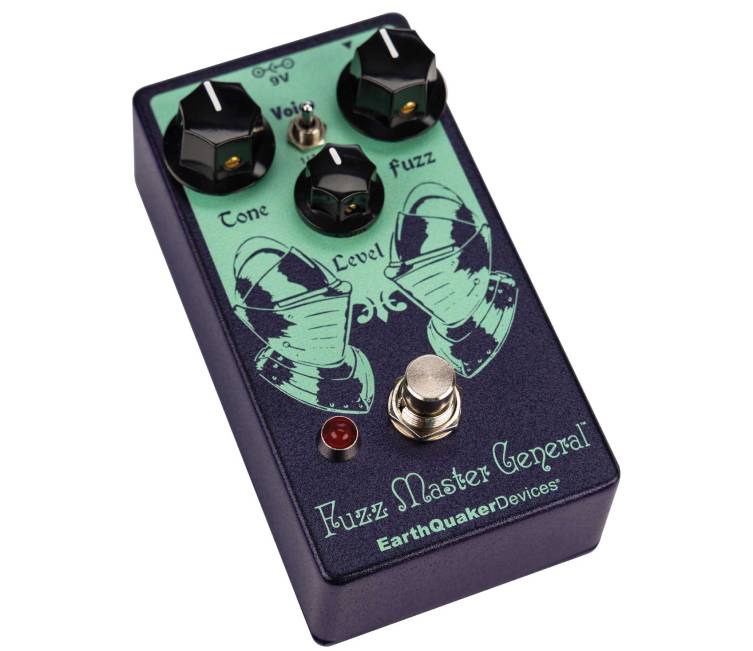
The Joy of Fuzz
Fuzz pedals really are instruments in their own right. They add so much, they impose themselves completely, and they provide living, moving sounds that require a high level of interaction from the player. There’s an element of hazard involved: you never quite know how it’s all going to sound when you start playing, and that leads to only more excitement.
If you thought that fuzz was just distortion by another name, then it’s time you took a deeper dive!


